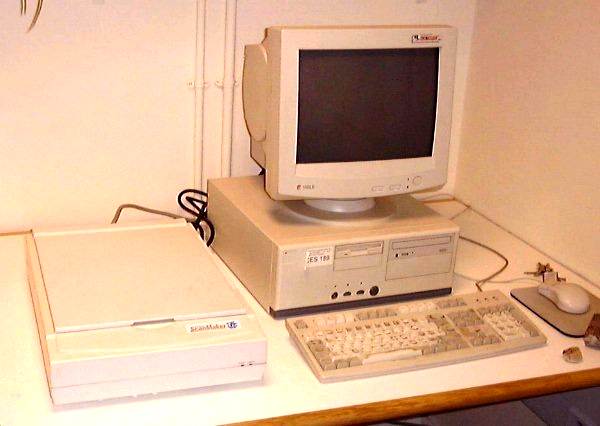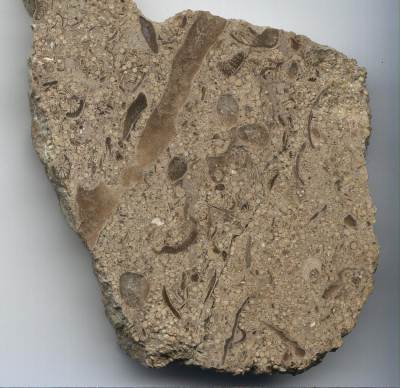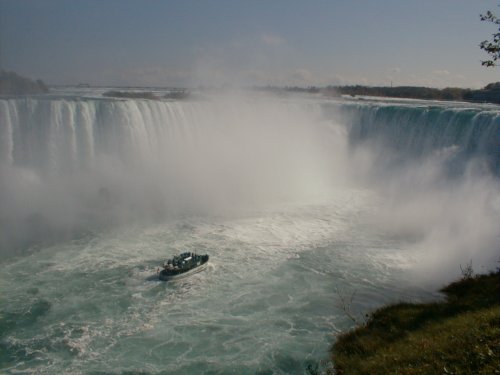| home | virtual field trips | regional geology | images | e-learning | links |
Roger SUTHREN
Both authors in Dept of Geology, Oxford Brookes University when this article was written Anton KEARSLEY
Note: since the presentation of this talk over 20 years ago, the resolution of digital cameras has improved by orders of magnitude. Nevertheless, the scanner remains a useful tool for acquiring images of geological objects quickly, and without having to set up lighting (RJS, 14 January 2019).
Paper presented at Geological Society of America Annual Meeting, Toronto, 29 October 1998, in Session 169: T13. Creating Learning Environments with the Internet and Multimedia II - NAGT and AGI
Abstract
 |
|
 |
|
|
|
|
good for high contrast subjects
gives an overview of the thin section, often not possible with a petrological microscope with inadequate low-power objectives
experiment with backgrounds (white or black paper, mirror....)
try a slide scanner
acetate peel of 'coal ball' concretion with fossil plant material preserved in fine detail. Upper Carboniferous.
close-up view of fossil plant material in another 'coal ball' peel
rocks with rough surfaces
Surprisingly, this too works successfully, giving a depth of focus of around 15 mm.
A cleaned-up bedding surface of Silurian 'Wenlock Limestone' from Wren's Nest, Dudley, West Midlands, U.K.
minerals
fossils
a lot of detail can be seen, such as the sutures in this ammonite
loose sediments
in a transparent container, or a standard micropalaeontology mount, upside down:
or stuck to a card with double-sided tape
Scan of carbonate sand from the Rockall Bank, NE Atlantic Ocean
cheap, no film needed;
publication-quality images;
quick, simple macrophotography, with minimal training
for macro work, no need to set up lighting
£100 ($160) scanner - first attempt
£600 ($1000) digital camera - after several attempts
Admittedly, this was written 20 or more years ago when we had just purchased our first, very expensive 1280 x 960 pixel digital camera. There have been rapid changes in resolution (and price!) of digital cameras. I would still contend, however, that for many purposes a cheap scanner will produce quicker, sometimes better images than an expensive digital camera with macro facility. [RJS, Jan 2019]
 |
But you can't do this with a scanner!(this is one of those 1280 x 960 images) |
web pages and paper handouts to support traditional and distance learning
e.g. sedimentary petrology (scroll down to the section on Porosity)
replacement of published materials, which can no longer be used as multiple class copies because of copyright restrictions
e.g. labelled diagrams of fossils, for web pages or printed class handouts.
labelled images to help students know what they should be seeing through the hand lens or microscope (useful for beginning students or subtle features). e.g. "Can you see the two cleavages at 87 degrees that I'm trying to point to as you look down the hand lens? (But actually I'm blocking the light, and the object I'm trying to point to is not the same as the one you are looking at!)"
If the student looks at the sample at the same time as viewing a magnified, labelled image on the computer (e.g. in a web page), small and subtle features are more easily explained and understood.
overcoming the problems of
having only one good sample for a large class
access to rare or fragile specimens
24 hour and remote access
rapid production of images for publication;
rapid exchange of 'virtual samples' between students, teachers, research workers, either privately or on the Internet (e.g. getting expert to identify a sample)
Other materials
Of course, this technique is not restricted to geological samples. The possibilities are limited only by our imagination. Some examples:
tree rings
In conclusion
scanned rocks, minerals and fossils can never be a replacement for the real thing
however, alongside natural materials they may play a valuable role in helping students to understand those materials
polished surface of planar stromatolite, Lower Jurassic, Boutenac, Aude, S France
![]()
This page is maintained by Roger Suthren. Last updated 14 January, 2019 4:15 PM